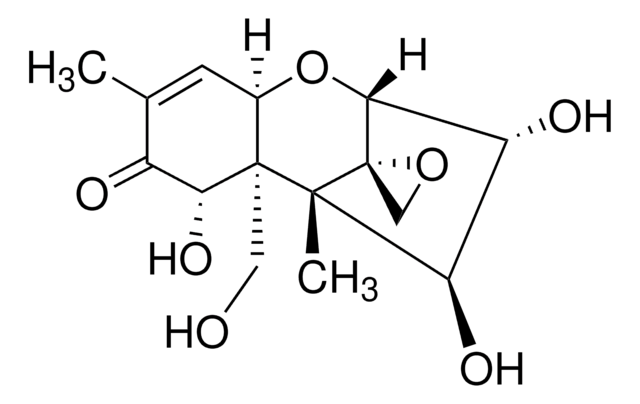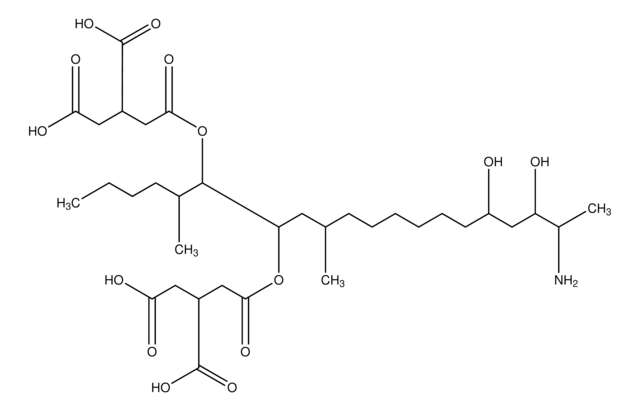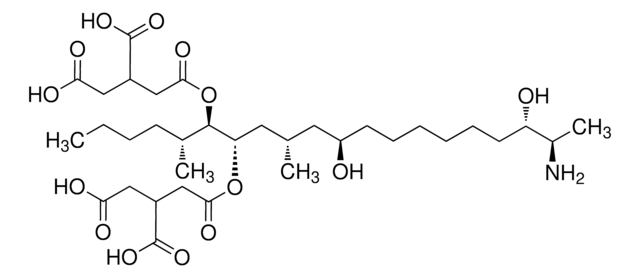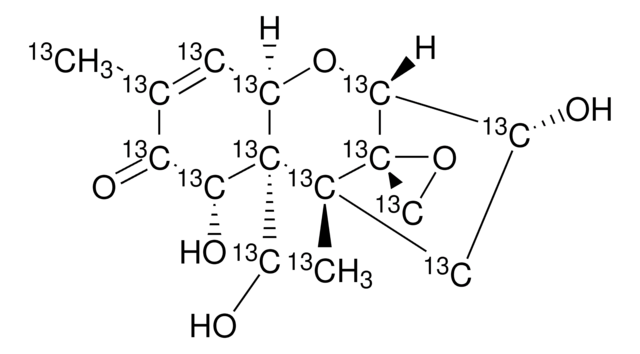34135
Deepoxy-deoxynivalenol solution
~50 μg/mL in acetonitrile, analytical standard
동의어(들):
3α,7α,15-Trihydroxy-trichothec-9,12-dien-8-one solution, DOM-1
About This Item
추천 제품
Grade
analytical standard
Quality Level
유통기한
limited shelf life, expiry date on the label
농도
~50 μg/mL in acetonitrile
기술
HPLC: suitable
gas chromatography (GC): suitable
응용 분야
cleaning products
cosmetics
food and beverages
personal care
형식
single component solution
저장 온도
−20°C
SMILES string
CC1=C[C@H]2O[C@@H]3[C@H](O)C[C@@](C)(C3=C)[C@@]2(CO)[C@H](O)C1=O
InChI
1S/C15H20O5/c1-7-4-10-15(6-16,13(19)11(7)18)14(3)5-9(17)12(20-10)8(14)2/h4,9-10,12-13,16-17,19H,2,5-6H2,1,3H3/t9-,10-,12+,13-,14+,15-/m1/s1
InChI key
ZACLXWTWERGCLX-MDUHGFIHSA-N
일반 설명
애플리케이션
분석 메모
신호어
Danger
유해 및 위험 성명서
Hazard Classifications
Acute Tox. 4 Dermal - Acute Tox. 4 Inhalation - Acute Tox. 4 Oral - Eye Irrit. 2 - Flam. Liq. 2
Storage Class Code
3 - Flammable liquids
WGK
WGK 2
Flash Point (°F)
35.6 °F
Flash Point (°C)
2 °C
개인 보호 장비
Eyeshields, Faceshields, Gloves, type ABEK (EN14387) respirator filter
이미 열람한 고객
자사의 과학자팀은 생명 과학, 재료 과학, 화학 합성, 크로마토그래피, 분석 및 기타 많은 영역을 포함한 모든 과학 분야에 경험이 있습니다..
고객지원팀으로 연락바랍니다.














